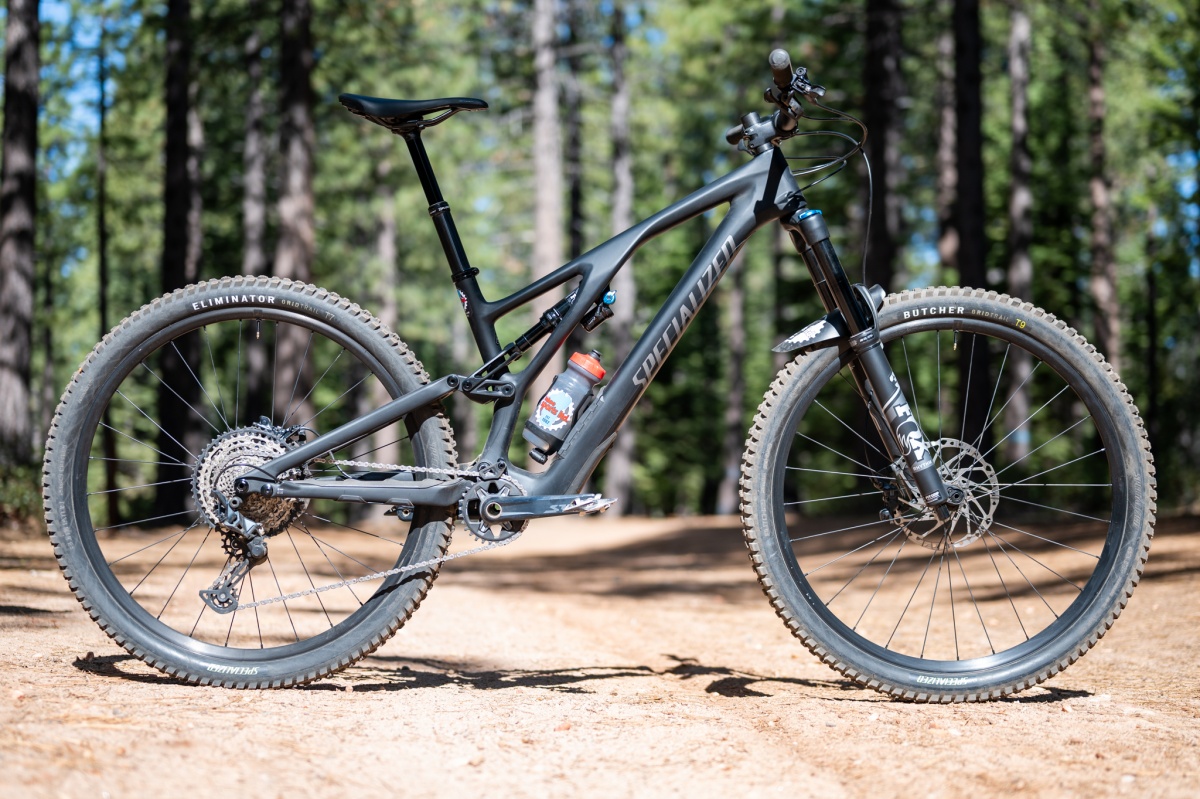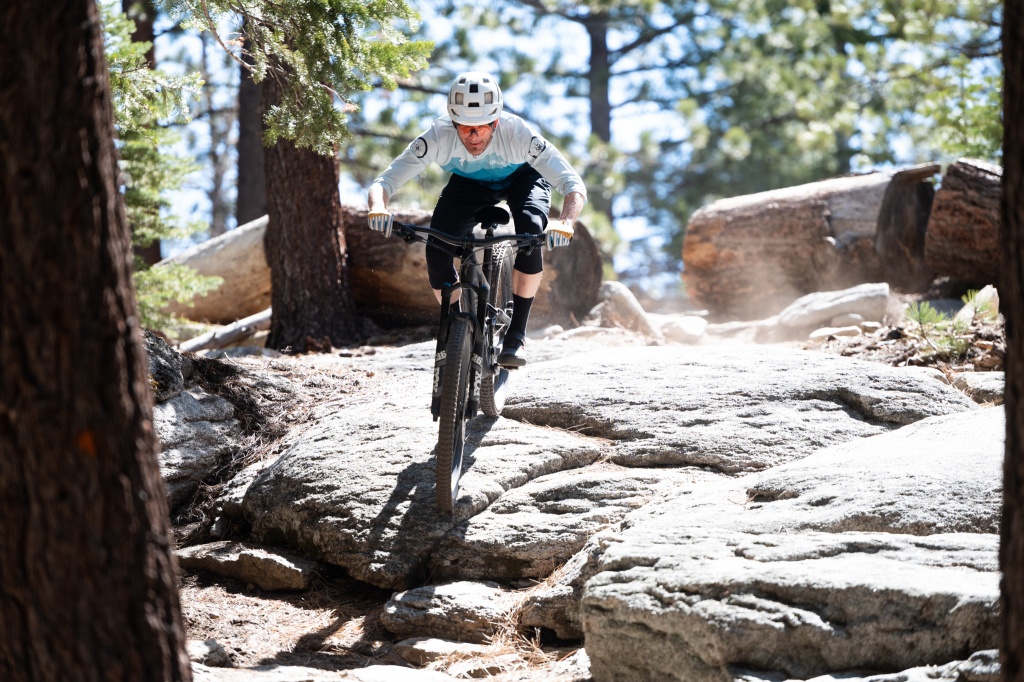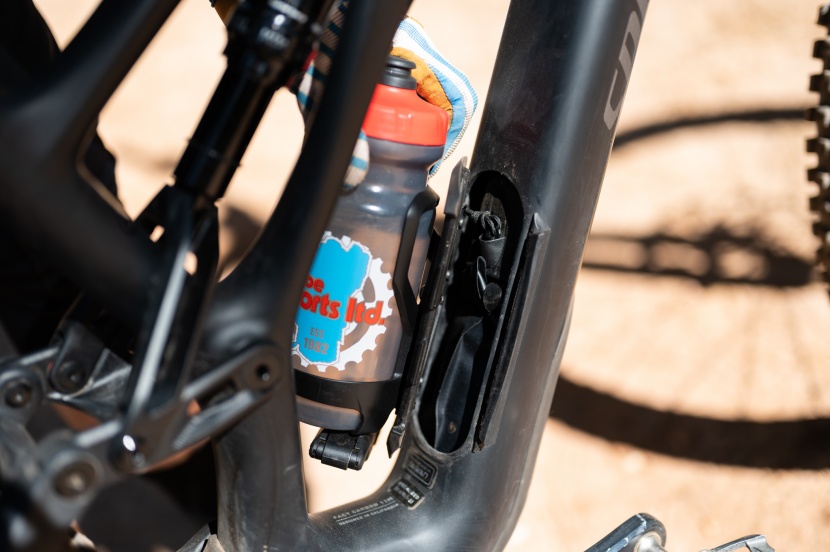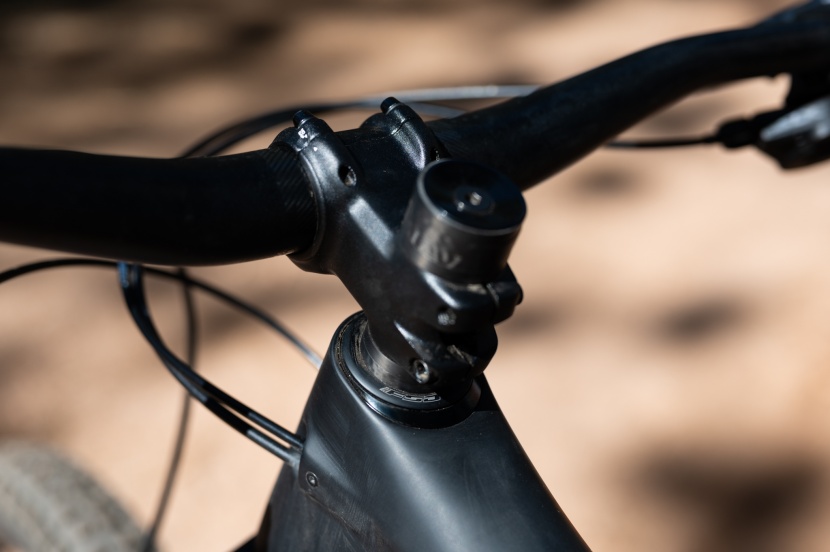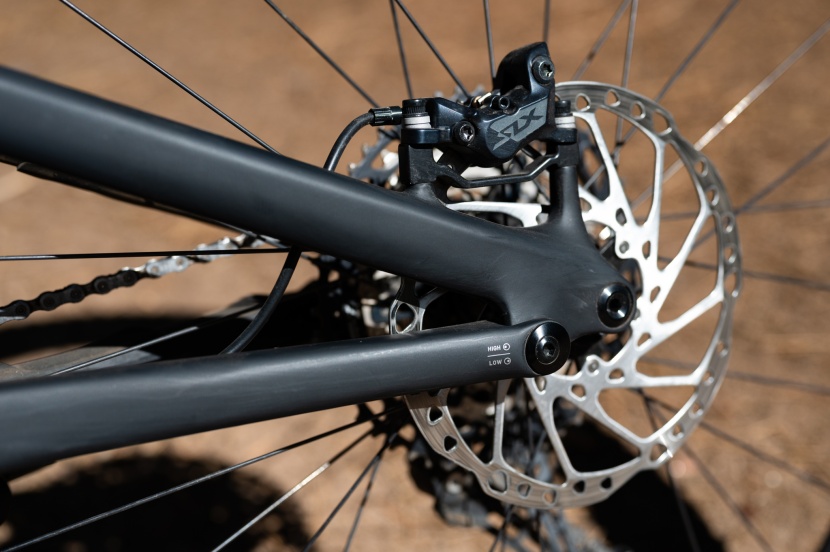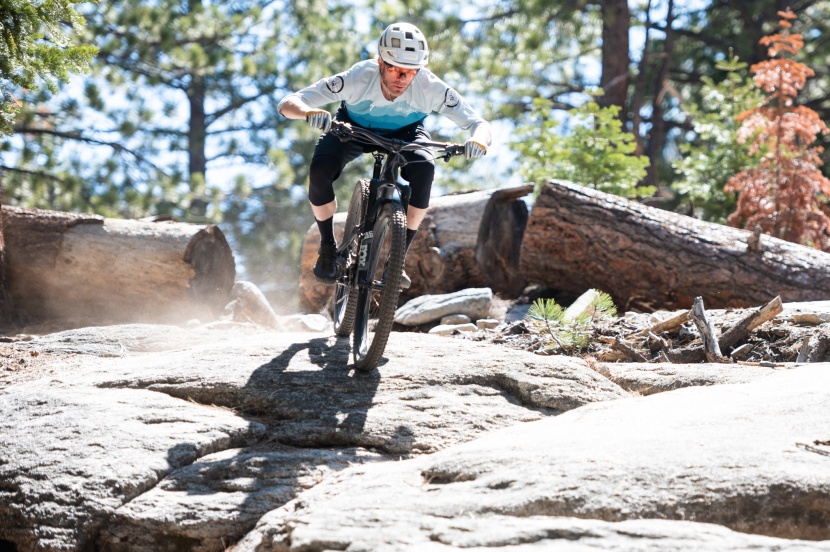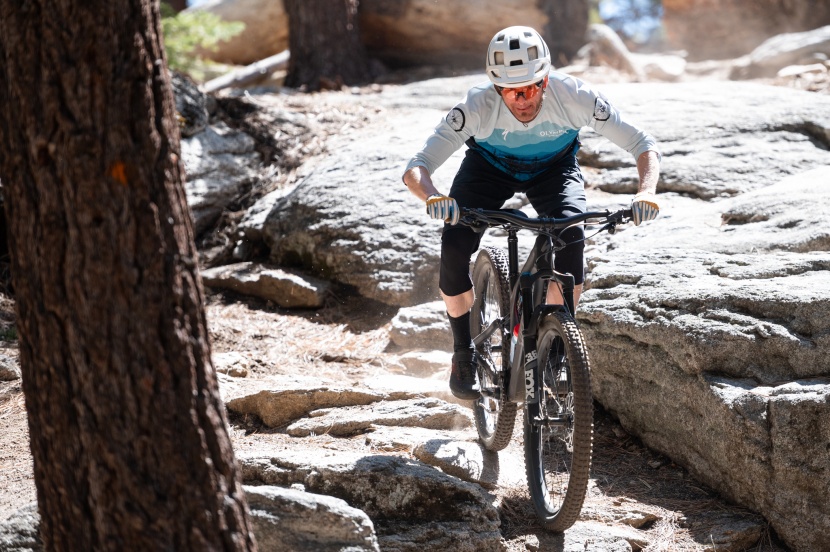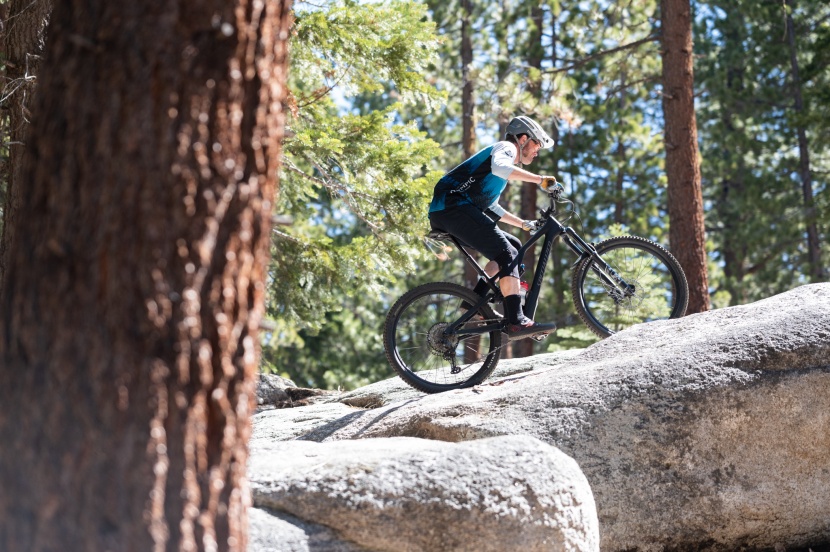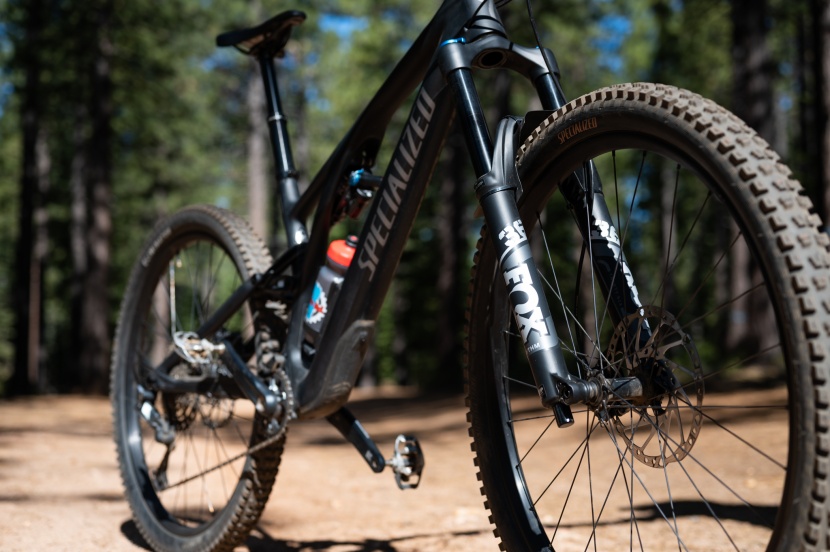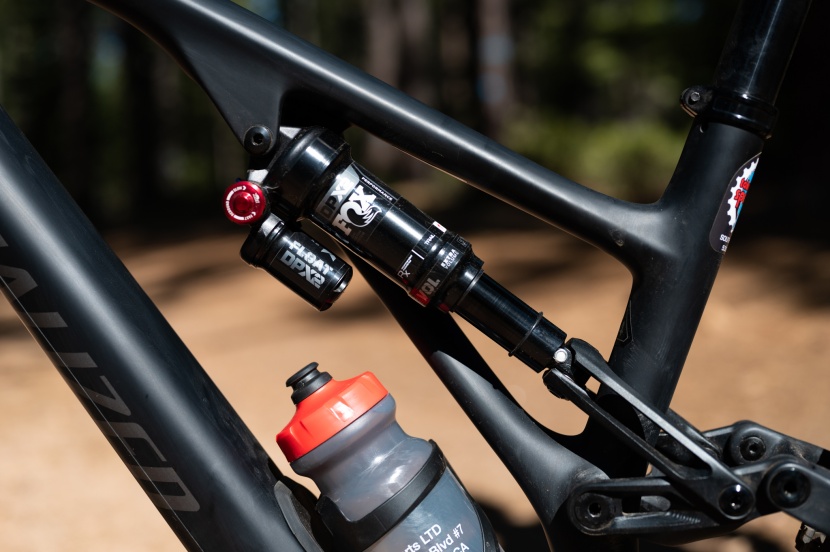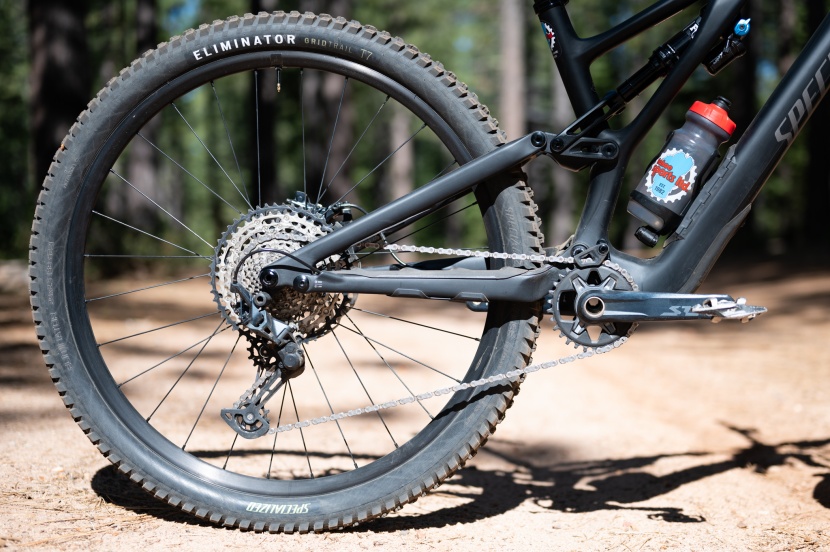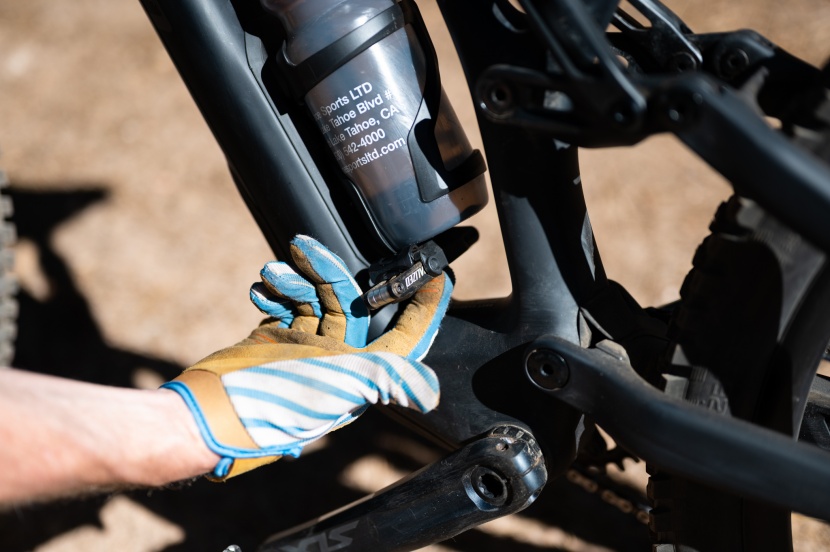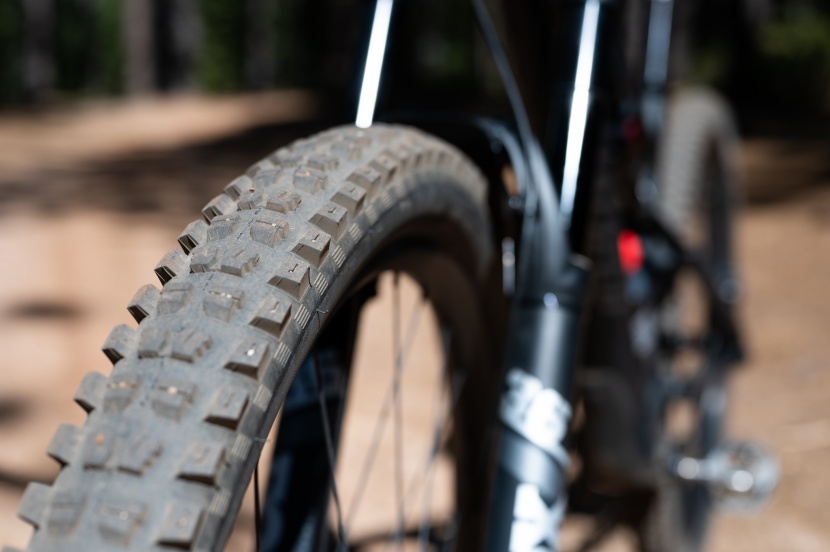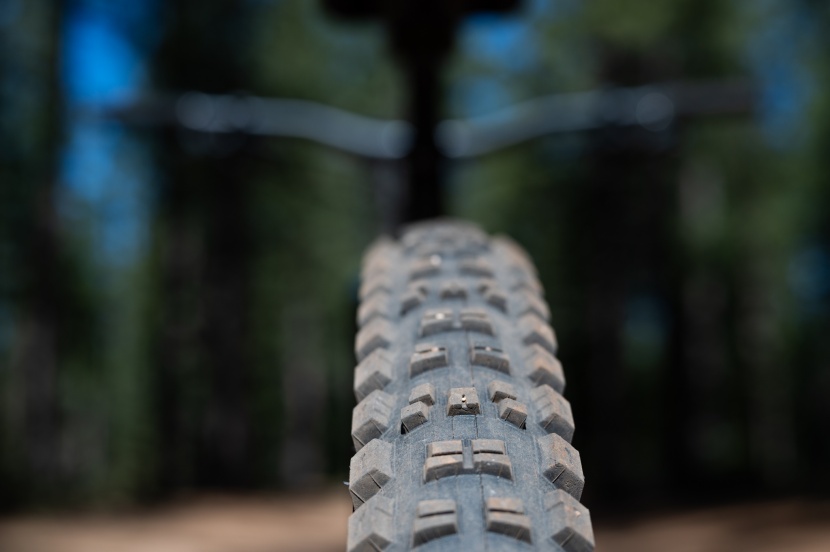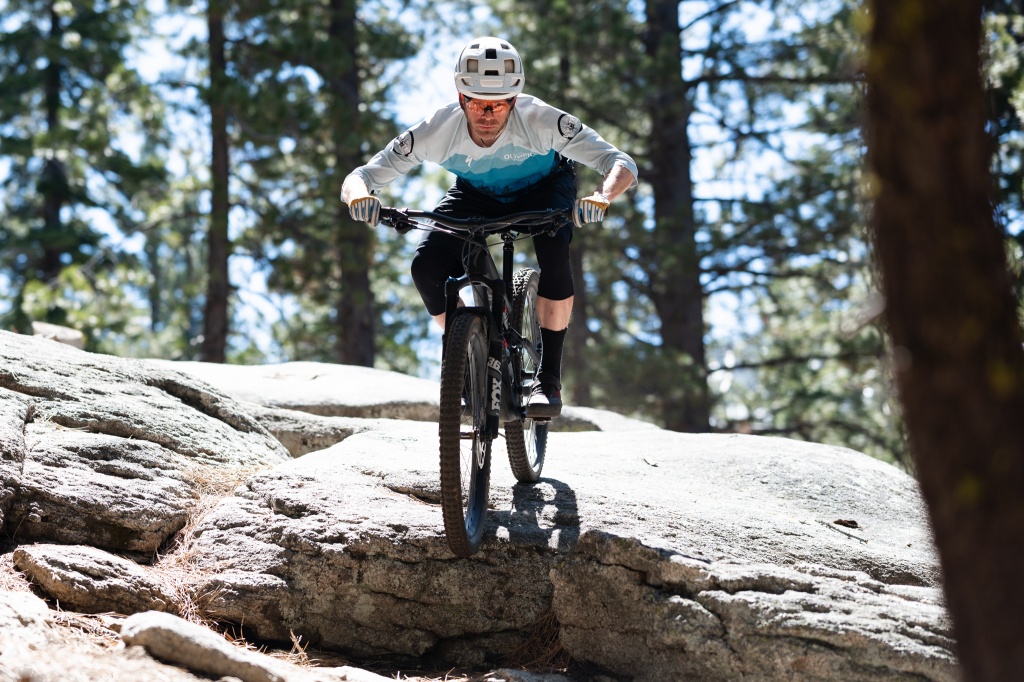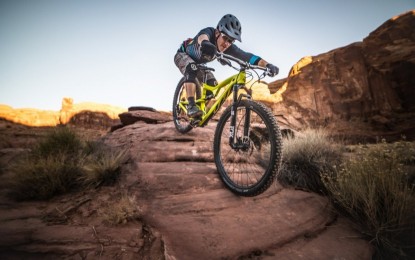Specialized Stumpjumper EVO Comp Review

Our Verdict
Our Analysis and Test Results
Should I Buy This Bike?
Specialized consistently makes bikes that are easy to love, and the new Stumpjumper EVO is another fine example. While the previous version was a dedicated long, low, slack shred machine, the new model gives the rider many more options. This 150mm travel carbon-framed 29er is seriously ready for anything with a highly adjustable geometry, giving the rider the ability to dramatically alter the bike's character for different riding styles or terrain. The head tube angle is easily adjusted a full 2 degrees in 1-degree increments from 63.5 to 65.5-degrees, and flip-chips in the chainstay pivots adjust the bottom bracket height by 7mm. This gives the rider six different setups to choose from, so you can set it up high and steep for trail riding one day, then switch it to low and slack for riding chairlifts at the bike park. The EVO is a shape-shifter that can be anything from a versatile long-legged trail bike to a completely downhill-oriented plow machine. This is an incredible amount of versatility for a single bike and one of the most appealing aspects of its design. Not to mention the fact that this bike rips. It charges downhill with authority, and the FSR suspension design smoothes anything in its path. It climbs quite well, too for a 150mm travel bike, with a relatively stable and efficient pedaling platform.
Adjustability aside, the bike itself is a thing of beauty. Specialized has made a sleek-looking carbon frame with even more SWAT integration than before. In addition to the zippered tool sleeve, they also include a nifty 20 oz water bladder that fits into the frame in the curve at the bottom of the downtube, so now you can go on even longer rides without carrying anything on your back. The details are very well sorted, and this bike is nearly silent on the trail no matter how rough it gets. The Comp build we tested hits a competitive price point and comes ready to shred as hard as this bike was intended.
The Ibis Ripmo V3 is a similar bike in terms of suspension travel and geometry (with the EVO in a high and steep setting). Without the huge adjustability of the EVO, the Ripmo is more of a dedicated long-legged trail bike, though it's still capable of dominating some enduro races. While it may not be as versatile as the EVO from an adjustment standpoint, we question how many riders will take advantage of that feature or need that range of adjustability. Both bikes are confident and composed on descents, though we feel the Ripmo is a touch more agile and responsive in tighter terrain and even mellower trails. In contrast, the EVO feels a little more eager to attack the fall line, especially when you slacken the head angle. Both bikes climb efficiently, although the Ripmo feels lighter and a little easier to handle, while the EVO has a slightly bigger and burlier feel. We think most aggressive trail riders would be very happy with either bike, but those seeking incredible versatility through adjustable geometry should try and get their hands on the EVO. Riders after a longer travel trail bike that charges hard climbs super well, and is still fun on less aggressive terrain should check out the Ripmo.
Frame Design
When Specialized updated the Stumpjumper models for the 2021 model year, they didn't hold back. They created two completely redesigned models in the Stumpjumper and Stumpjumper EVO. They may have the same silhouette as the previous versions but are totally new and different. The EVO has a full Fact 11m carbon frame and features 150mm FSR (Future Shock Rear) suspension. This design is a four-bar or Horst-Link system with the main pivot just above the bottom bracket, pivots on the chainstays forward of the rear axle, and a rocker link midway up the seat tube that compresses the shock that is attached to the top tube. The asymmetrical frame has a sidearm strut between the top and seat tubes for extra torsional stiffness. It features SWAT storage in the downtube and comes with a zippered tool sleeve and a 20oz water bladder that fits neatly inside the frame. The bike also has a bottle cage attached to the SWAT door and a SWAT multi-tool. Full sleeve internal cable routing, molded chainstay, and downtube protection round out the frame's features. The frame is compatible with coil shocks, and Specialized offers a mullet-link for those who want to run a smaller back wheel without changing the bike's geometry.
The EVO's geometry is one of its most interesting features. Specialized did an amazing job making this one of the most adjustable bikes on the market and easily adjustable to boot. The head tube angle can be adjusted into three positions one degree at a time, from 63.5 to 65.5-degrees. This is done by switching the position of the eccentric upper headset cup and is relatively quick and easy. Additionally, a set of flip chips in the chainstay pivots can be switched between high and low settings to adjust the bottom bracket height by 7mm. These geometry adjustments essentially give you six distinct setup options.
Specialized also revised their sizing, now called S-sizing, to have riders buy bikes based on desired handling characteristics. They come in six sizes, S1-S6, and are roughly equivalent to XS-XXL. All sizes have low standover heights, and the idea is that a rider could size up or down to match the reach and wheelbase with their riding style or terrain. We tested an S4 with a 475mm reach and 1,247mm wheelbase. It has a 77-degree seat tube angle along with a 340mm bottom bracket height and 438mm chainstay/rear center length. Our test bike weighed in at 31 lbs 14 oz set up tubeless without pedals.
Design Highlights
- Carbon frame only
- 29-inch wheels
- 150mm of FSR travel
- Designed around a 160mm reduced offset fork
- Highly adjustable geometry
- SWAT integration
- Internal cable routing
- Molded chainstay and downtube protection
- Complete builds ranging in price from $4,300 (tested) to $10,000
Downhill Performance
Sure, this bike is pretty well-rounded, but the Stumpjumper EVO is truly a standout on the descents. It's 150mm of rear-wheel travel and dialed FSR suspension design eats up chop, chunder, and drops, and it has a burly and aggressive feel that borders on enduro. It thrives at speed and inspires confidence in steep and rough terrain. The adjustable geometry is an obvious highlight, giving the rider the option to set it up for anything from everyday trail riding, steeps, or days riding lifts at the bike park.
Specialized didn't pull any punches when they redesigned the Stumpjumper EVO. They set out to make a bike for aggressive trail, all-mountain, and enduro riders, and we feel they hit the nail on the head. Yeah, it's probably too much bike for many riders and locations, but they make the lighter, zippier 130mm Stumpjumper (non-EVO) for that market. Rather than pigeon-holing the new EVO as just a super aggressive downhill shredder like the previous version, the huge range of geometry adjustability lets the rider choose how they want this bike based on their preferences, expanding its appeal to a much larger group of riders. We've already mentioned the adjustments above, and it is quite remarkable how dramatically you can change the EVO's character for different riding styles and terrain.
In the high/steep setting, it's a versatile longer-travel trail slayer that you can ride just about anywhere. Slacken the head angle by a degree or two, and you've got yourself an enduro or downhill plow machine. We tested it primarily in high/steep and were impressed by its versatility and ability to charge hard. We also adjusted the head angle to the “neutral,” 64.5-degree, setting for some steeps and skidders when we wanted to be a little more behind the front wheel. No matter the geometry setting, we found it incredibly stable at speed with a damp, ground-hugging feel. It also responds well to rider input, although its handling gets notably less responsive the slacker the head angle. We also didn't find it to be the most playful, but it certainly wasn't opposed to slapping corners or popping side hits when we weren't too busy feeling superhuman just charging down the fall line.
With 150mm of rear-wheel travel and a 160mm fork, the EVO is on the longer end of the travel spectrum for a trail bike, and it has an enduro bike feel. It's got enough travel to tackle gnarly terrain, drops, and bail you out of some questionable line choices, and the revised FSR suspension design feels dialed. Without going into mind-numbing detail, Specialized improved the kinematics (progressive leverage ratio and high anti-squat) to make the EVO feel supple off the top, smooth and calm over high-frequency chop and chunk and forgiving on big hits with enough progression to recover well and prevent harsh bottom outs. It inspired the confidence to punch it straight through rock gardens and take it long off rock drops without ever feeling like it was getting bucked offline, wallowing, or hanging up. Perhaps just as impressive was how quiet it was in the rough stuff. The molded chainstay protection and full sleeve internal cable routing muted any bike noise other than the click of the freehub and the tires on the trail surface.
Despite being the least expensive option, the Comp build we tested is trail-ready and can back up this bike's aggressive trail slaying intentions. The least impressive aspect of the build has to be the Fox 36 Rhythm fork with the GRIP damper. Still, this fork is relatively supple with a sturdy chassis, but the GRIP damper leaves a bit to be desired, and tuneability is somewhat limited. The Fox DPX2 Performance shock works just fine. The Shimano SLX 4-piston brakes are impressive, and the 200mm front rotor helps boost the stopping power. The cockpit consists of Specialized branded bits, but it all comes together for a comfortable and responsive front end with plenty of steering leverage. The Specialized alloy wheels have a comfortable, damp ride quality and a 30mm inner rim width to work well with modern tire dimensions. The Specialized Butcher/Eliminator tire combo feels a bit draggy, but they are a nicely matched pair that provides loads of cornering and braking traction. The GRID Trail casing feels relatively supportive and durable, and the new T9 and T7 rubber compounds seem to improve over previous models.
Climbing Performance
Considering how hard the Stumpjumper EVO charges the descents, it's a good climber. Sure, there are similar bikes that climb slightly better, but it certainly exceeded our expectations. The FSR suspension design is relatively supportive and efficient, and this bike goes uphill better than any aggressive 150mm trail bike probably should. Of course, its length comes into play in tighter spaces, and handling changes dramatically in the slacker and lower geometry settings.
One thing that really stood out on the climbs was how calm the FSR suspension design was under pedaling forces while seated. From the saddle, it seemed to isolate the pedaling forces well for a virtually bob-free experience over smooth terrain, and it opens up nicely over rough patches. Like previous versions of the Stumpjumper (and most bikes, honestly), the saddle efforts resulted in more noticeable pedal-bob. We climbed mostly with the shock in the open position on singletrack, which helped to keep the rear wheel glued to the ground. If we knew we'd be encountering any super rough sections or the saddle punches, the trail setting provided a bit more support, and firm was reserved for paved or fire road climbs.
The Stumpjumper EVO has a nice steep seat tube angle that props the rider up directly above the cranks for efficient power transfer and an up-top climbing position. Our S4 had a nice roomy cockpit, and the seated pedaling position was comfortable and not too stretched out. We found the high/steep setting to be the best for climbing on the trail as it provided the most responsive handling and pedal clearance. Even then, it can feel like a handful in super tight terrain due to its length, and switchbacks and technical puzzles could be a bit of a challenge. When you slack out the head angle or lower the bottom bracket, the pedals feel dangerously close to the ground, and its handling gets noticeably more sluggish, as is to be expected. Lower/slacker settings were fine on road climbs but felt awkward on singletrack.
The components on the Comp build we tested gave us little, if anything to complain about. The SLX 12-speed drivetrain works very well with crisp shifting and plenty of range for the steepest climbs. The Specialized Bridge Comp saddle proved quite comfortable, as most Specialized saddles are, and was a pleasant platform to sit and spin away the miles. The Butcher and Eliminator tires didn't feel like the fastest rolling combo, but the Eliminator provides plenty of climbing traction and hooks up well on most surfaces.
Photo Tour
Value
We think the Stumpjumper EVO Comp is a solid value in the current market. This quality bike has excellent integration and features, and its super adjustable geometry makes it three bikes in one. The build is pretty well sorted, and nothing needs to be upgraded to get out and shred. It's more bike than many riders need, but super aggressive trail riders and enduro racers will find a lot of value here.
Conclusion
If you're an aggressive rider who seeks one bike that can do it all, the Stumpjumper EVO is worth a good long look. This 150mm 29er's highly adjustable geometry makes it multiple bikes in one. You can set it up as a versatile, long-legged trail bike or slack it out to be a thoroughbred enduro race machine. With so much adjustability, you can dial in the geometry to suit your riding style and terrain. This bike charges hard and climbs pretty darn well, and Specialized's attention to detail and SWAT integration help to set it apart from the rest of the field.
Other Versions
Specialized makes the Stumpjumper EVO in four complete builds with the Comp build we tested as the least expensive, entry-level model. The three additional models range in component spec, and price up to $10,000 for the top-of-the-line S-Works build.
Specialized also makes the Stumpjumper without the EVO treatment. This is a less aggressive 130mm travel trail bike with a 140mm fork. It isn't nearly as adjustable as the EVO, but it is much lighter in weight. The Stumpjumper comes in carbon and aluminum frames with complete builds ranging in price from $2,400 to $9,800.

